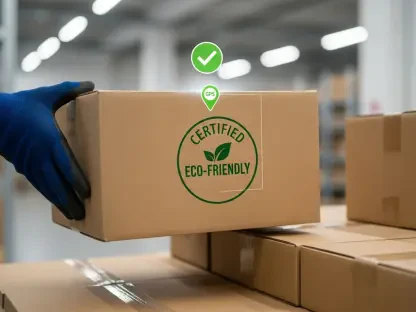Continuous Transaction Controls (CTC) mandates have become a pivotal requirement in the global commercial landscape, necessitating real-time submission of transactional data to government entities. With a growing emphasis on aligning these regulatory requirements with business automation, indirect tax professionals face the challenge of ensuring seamless operations and compliance. This article delves into the impact of CTC mandates on financial operations, explores the integration of CTC compliance within business automation, and outlines the essential steps businesses must take to achieve adherence to these regulations.
The Growing Importance of CTC Mandates
As countries around the world increasingly enforce stringent CTC mandates, businesses are required to align their processes to meet new standards for real-time data submission. Initially, CTC mandates focused primarily on business-to-business (B2B) transactions, necessitating the digital exchange of invoices between companies. However, the scope of these mandates has broadened significantly, extending to various activities such as procurement and post-sales transactions. This expansion necessitates the adoption of comprehensive e-invoicing and digital reporting practices, ensuring businesses can maintain compliance in a rapidly evolving regulatory environment.
The proliferation of CTC mandates necessitates a shift in how companies manage their transactional data. It requires businesses to establish systems that can accurately document and convey transactions electronically. With governments demanding more granular data, companies must ensure that their processes are adapted to meet these evolving regulatory needs. Additionally, failure to comply with CTC mandates can lead to severe consequences, including financial penalties, operational disruptions, and reputational damage. Therefore, understanding the growing importance of these mandates and proactively adapting to them is essential for maintaining operational integrity and avoiding punitive measures.
Business Automation and CTC Compliance
Business automation offers a vital solution to the challenges posed by CTC mandates. Leveraging technology to streamline processes like accounts receivable (AR) and accounts payable (AP) is key to integrating CTC compliance effectively. By embedding regulatory requirements within automated systems, companies can enhance operational efficiency, reduce risks, and ensure accurate documentation and reporting of transactions. This integration of CTC compliance within business automation is not just transforming operational models but urging a comprehensive reevaluation of traditional practices to foster more efficient workflows.
Tax managers play a pivotal role in this transformation, as they must incorporate CTC regulations into their strategies to ensure seamless operations. Automated systems can process invoices, manage procurement activities, and handle post-sales documentation, all while ensuring alignment with regulatory standards. Additionally, the adoption of business automation tools enables real-time tracking and reporting, which is crucial for meeting CTC requirements. By automating repetitive tasks and utilizing advanced analytics, companies can improve data accuracy and reduce manual errors, significantly enhancing their compliance posture.
Impact on Supply Chain Management
The integration of CTC mandates has a profound impact on supply chain management, extending across sourcing, procurement, manufacturing, shipping, and sales. Initially, governments targeted B2B invoicing regulations within the supply chain’s manufacturing and sales components. However, these regulatory requirements gradually expand to encompass broader transactional data demands, including procurement and shipping information. For instance, in the healthcare sector, electronic orders require businesses to process orders, issue invoices, and submit shipment information to government entities. This comprehensive synchronization ensures that transactions are validated, aligned with regulatory standards, and reduces overspending.
As CTC mandates evolve, businesses must adapt their supply chain processes to fulfill these requirements seamlessly. This involves implementing systems that can accurately track and report various stages of the supply chain, from procurement to final delivery. Different jurisdictions may employ specific terminologies, such as “e-way bill” or “dispatch advice,” to describe these processes. Consequently, businesses must be equipped to navigate these diverse regulatory landscapes. With governments demanding detailed transactional data, companies must invest in technology solutions that facilitate real-time reporting and compliance, ultimately enhancing supply chain efficiency and reducing operational risks.
Human Resources and Organizational Processes
Successfully implementing CTC compliance goes beyond merely adopting technological advancements. It requires an in-depth understanding of regulatory requirements, identifying gaps within existing processes, and fostering collaboration across the organization. Critical factors for success include comprehending obligations, recognizing system deficiencies, developing a project methodology with clear metrics, and continuously updating processes to ensure future compliance. A focus on skills, stakeholder identification, and effective communication is paramount to achieving seamless integration.
Addressing the human resources aspect involves ensuring that teams possess the requisite skills for implementing CTC compliance. Training programs play a crucial role in educating employees about new processes, regulatory changes, and the importance of accuracy in transactional data. Furthermore, identifying critical stakeholders and engaging them in the compliance process is essential for fostering a collaborative environment. Effective communication strategies facilitate the dissemination of information across the organization, ensuring everyone is aligned with the new requirements and understands their roles. These steps are vital for mitigating risks, improving operational efficiency, and achieving long-term compliance.
Pivotal Considerations and Consequences of Non-Compliance
Achieving seamless CTC compliance entails addressing core aspects such as skills, stakeholder involvement, and strategic communication. Developing comprehensive training programs that educate employees on new processes and regulations is crucial. However, businesses must also be aware of the severe penalties for non-compliance with CTC mandates. Financial fines, increased operational costs due to manual processes, delayed or denied VAT deductions, supply chain inefficiencies, and reputational damage are among the consequences. Furthermore, non-compliance may result in operational shutdowns in certain jurisdictions and, in specific cases, lead to the imprisonment of line managers.
Given these potential repercussions, businesses must prioritize compliance to avoid significant disruptions and financial penalties. Ensuring that employees are thoroughly trained and that systems are regularly updated to meet regulatory changes can mitigate these risks effectively. Strategic communication within the organization fosters a culture of compliance, whereby every member understands the importance of adhering to CTC mandates. Proactively addressing these considerations enables businesses to navigate the complexities of regulatory requirements and maintain operational stability.
Preparing for the Future
Continuous Transaction Controls (CTC) mandates have become a critical requirement in today’s global business environment, requiring the real-time submission of transactional data to governmental entities. As the emphasis on aligning regulatory requirements with business automation grows, indirect tax professionals must navigate the dual challenge of maintaining smooth operations while ensuring compliance. This article examines the substantial impact of CTC mandates on financial processes, investigates how businesses can integrate CTC compliance into their automation systems, and highlights the key steps necessary for businesses to achieve compliance with these regulations. Furthermore, it discusses the technological advancements that can aid in the smooth adoption of CTC requirements and offers insights into best practices for managing compliance effectively. Indirect tax professionals need to keep abreast of evolving regulations and ensure they have the right tools and strategies in place to meet the demands of CTC mandates, thus fostering a compliant and efficient business environment.









